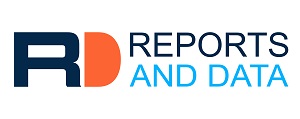Global Neonatal ICU Ventilators Market to Double by 2034, Driven by Preterm Births and Technological Advances

Reports And Data
neonatal ICU ventilators market is on track for strong growth, projected to rise from USD 457.84 million in 2024
VANCOUVER, BRITISH COLUMBIA, CANADA, September 10, 2025 /EINPresswire.com/ -- The global neonatal ICU ventilators market is on track for strong growth, projected to rise from USD 457.84 million in 2024 to USD 910.80 million by 2034. This represents a compound annual growth rate (CAGR) of 7.12%, fueled by the rising number of preterm births and rapid advancements in ventilator technology.Invasive ventilators remain the largest product segment, as they are critical for managing severe cases of respiratory distress in newborns. However, non-invasive ventilators are expected to grow at the fastest pace, as hospitals and clinics increasingly adopt less invasive solutions that are safer and easier to use. Conditions such as respiratory distress syndrome and bronchopulmonary dysplasia are among the leading medical drivers of demand, underscoring the urgent need for advanced ventilatory care.
You can Download Free Sample PDF Copy Of This Report At: https://www.reportsanddata.com/download-free-sample/11115
North America is expected to hold the leading share of the market, supported by a well-established healthcare system and early adoption of advanced medical technologies. At the same time, Asia Pacific is forecasted to grow at the fastest rate, as governments increase healthcare spending and invest in improving neonatal care infrastructure.
Top 10 Companies
GE Healthcare
Medtronic
Philips Healthcare
Drägerwerk AG
Hamilton Medical AG
Smiths Medical
Fisher & Paykel Healthcare
ResMed
Getinge AB
Vyaire Medical
According to the World Health Organization, around 15 million babies are born preterm every year. In the United States, the Centers for Disease Control and Prevention reported that 10.23% of births in 2022 were preterm. These figures highlight the pressing global need for advanced neonatal intensive care solutions. Public funding is also playing a major role in driving growth. In 2023, the U.S. Department of Health and Human Services allocated USD 2 billion to improve neonatal care, while the European Union’s Horizon 2020 program continues to support the development of innovative neonatal medical devices.
Technology is reshaping the market in meaningful ways. Companies are integrating artificial intelligence (AI) and the Internet of Things (IoT) into their ventilator systems to allow real-time monitoring, predictive maintenance, and improved patient safety. In March 2024, Philips Healthcare introduced a new line of neonatal ventilators with AI-driven analytics designed to simplify use and improve care outcomes. Sustainability is another growing trend, with manufacturers developing eco-friendly designs that use energy-efficient systems and recyclable materials.
Despite the strong outlook, the market faces hurdles. The high cost of advanced ventilators and the need for specialized training can limit adoption, particularly in resource-constrained settings. Regulatory requirements in regions such as North America and Europe also present challenges, with medical device approvals requiring significant investment of both time and resources. According to the World Health Organization, 60% of healthcare facilities in low-income countries cite affordability and lack of trained staff as the main obstacles to adopting advanced neonatal technologies.
Still, momentum remains strong. Supportive regulatory reforms, such as the U.S. Food and Drug Administration’s expedited approval pathways for critical devices, are helping new ventilators reach the market faster. Growing digital transformation in healthcare, projected by McKinsey to increase digital health spending by 15% annually, is also expected to boost innovation and adoption.
Leading companies in the market include GE Healthcare, Medtronic, and Philips Healthcare. These players are investing heavily in research and development to create advanced ventilators that improve efficiency, reduce risks, and deliver better patient outcomes.
Neonatal Icu Ventilators Market Segmentation
By Product Type
Invasive Ventilators
Non-Invasive Ventilators
High-Frequency Ventilators
By Application
Respiratory Distress Syndrome
Bronchopulmonary Dysplasia
Others
By End User
Hospitals
Neonatal Clinics
Others
By Technology
Mechanical Ventilators
Electronic Ventilators
By Distribution Channel
Direct Sales
Distributors
Get a Customized Report: https://www.reportsanddata.com/request-customization-form/11115
With the global demand for neonatal intensive care rising and hospitals moving toward advanced digital solutions, the neonatal ICU ventilators market is expected to remain on a strong growth path over the next decade.
John W
Reports and Data
+1 2127101370
sales@reportsanddata.com
Legal Disclaimer:
EIN Presswire provides this news content "as is" without warranty of any kind. We do not accept any responsibility or liability for the accuracy, content, images, videos, licenses, completeness, legality, or reliability of the information contained in this article. If you have any complaints or copyright issues related to this article, kindly contact the author above.